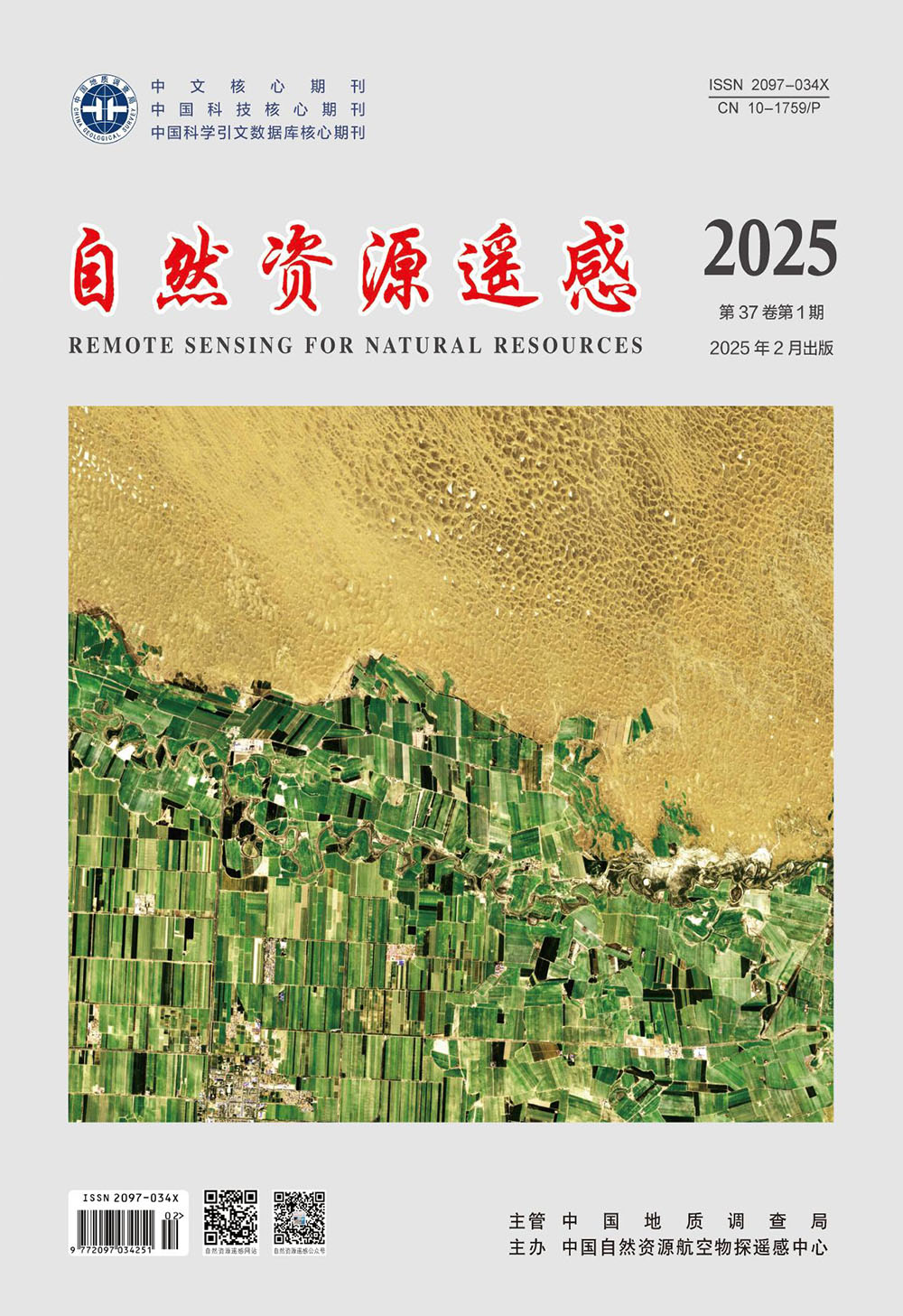|
[1]
|
张清敏.新冠肺炎疫情与全球卫生外交[J].当代世界, 2020(4):35-41.
Google Scholar
Zhang Q M.Global health diplomacy in COVID-19 epidemic[J].Contemporary World, 2020(4):35-41.
Google Scholar
|
|
[2]
|
Yue W, Gao J, Yang X.Estimation of gross domestic product using multi-sensor remote sensing data:A case study in Zhejiang Pro-vince, East China[J].Remote Sensing, 2014, 6(8):7260-7275.
Google Scholar
|
|
[3]
|
李德仁, 李熙.论夜光遥感数据挖掘[J].测绘学报, 2015, 44(6):591-601.
Google Scholar
Li D R, Li X.An overview on data mining of nighttime light remote sensing[J].Acta Geodaetica et Cartographica Sinica, 2015, 44(6):591-601.
Google Scholar
|
|
[4]
|
郭永德, 高金环, 马洪兵.Suomi-NPP夜间灯光数据与GDP的空间关系分析[J].清华大学学报(自然科学版), 2016, 56(10):1122-1130.
Google Scholar
Guo Y D, Gao J H, Ma H B.Spatial correlation analysis of Suomi-NPP nighttime light data and GDP data[J].Journal of Tsinghua University(Science and Technology), 2016, 56(10):1122-1130.
Google Scholar
|
|
[5]
|
顾鹏程, 王世新, 周艺, 等.基于时间序列DMSP/OLS夜间灯光数据的GDP预测模型[J].中国科学院大学学报, 2019, 36(2):188-195.
Google Scholar
Gu P C, Wang S X, Zhou Y, et al.Estimation of GDP based on long time series of DMSP/OLS nighttime light images[J]. Journal of University of Chinese Academy of Sciences, 2019, 36(2):188-195.
Google Scholar
|
|
[6]
|
陈颖彪, 郑子豪, 吴志峰, 等.夜间灯光遥感数据应用综述和展望[J].地理科学进展, 2019, 38(2):205-223.
Google Scholar
Chen Y B, Zheng Z H, Wu Z F, et al.Review and prospect of application of nighttime light remote sensing data[J].Progress in Geo-graphy, 2019, 38(2):205-223.
Google Scholar
|
|
[7]
|
余柏蒗, 王丛笑, 宫文康, 等.夜间灯光遥感与城市问题研究: 数据、方法、应用和展望[J].遥感学报, 2021, 25(1):342-364.
Google Scholar
Yu B L, Wang C X, Gong W K, et al.Nighttime light remote sen-sing and urban studies: Data, methods, applications, and prospects[J].National Remote Sensing Bulletin, 2021, 25(1):342-364.
Google Scholar
|
|
[8]
|
韩向娣, 周艺, 王世新, 等.夜间灯光遥感数据的 GDP 空间化处理方法[J].地球信息科学学报, 2012, 14(1):128-136.
Google Scholar
Han X D, Zhou Y, Wang S X, et al.GDP spatialization in China based on nighttime imagery[J].Journal of Geo-information Science, 2012, 14(1):128-136.
Google Scholar
|
|
[9]
|
刘杨, 李宏伟, 杨斌程, 等.基于遥感数据和POI数据的GDP空间化研究--以北京市为例[J].地域研究与开发, 2021, 40(2):27-32, 39.
Google Scholar
Liu Y, Li H W, Yang B C, et al.Spatialization of GDP based on remote sensing data and POI data:A case study of Beijing City[J].Areal Research and Development, 2021, 40(2):27-32, 39.
Google Scholar
|
|
[10]
|
Dai Z, Hu Y, Zhao G.The suitability of different nighttime light data for GDP estimation at different spatial scales and regional levels[J].Sustainability, 2017, 9(2):305.
Google Scholar
|
|
[11]
|
孙久文, 周孝伦.多维视角下的长三角城市群空间结构及其影响因素--基于NPP-VIIRS夜间灯光数据和高德人口迁徙数据[J].经济地理, 2023, 43(5):78-88.
Google Scholar
Sun J W, Zhou X L.Spatial structure and influencing factors of the Yangtze River Delta urban agglomeration from a multidimensional perspective:Based on NPP-VIIRS nighttime lighting data and Gaode’s population migration data[J].Economic Geography, 2023, 43(5):78-88.
Google Scholar
|
|
[12]
|
李翔, 朱江, 尹向东, 等.利用珞珈一号夜间灯光数据的广东省GDP空间化[J].遥感信息, 2021, 36(2):40-45.
Google Scholar
Li X, Zhu J, Yin X D, et al.Spatializing GDP of Guangdong Pro-vince based on Luojia No.1 night light data[J].Remote Sensing Information, 2021, 36(2):40-45.
Google Scholar
|
|
[13]
|
Zhao Z, Tang X, Wang C, et al.Analysis of the spatial and temporal evolution of the GDP in Henan Province based on nighttime light data[J].Remote Sensing, 2023, 15(3):716.
Google Scholar
|
|
[14]
|
江泽霖, 邓健, 栾海军, 等.基于逐日夜间灯光遥感的新冠肺炎疫情变化信息快速提取--以北京市为例[J].测绘通报, 2022 (7):43-48.
Google Scholar
Jiang Z L, Deng J, Luan H J, et al .Rapid extraction of COVID-19 information based on nighttime light remote sensing:A case study of Beijing[J].Bulletin of Surveying and Mapping, 2022(7):43-48.
Google Scholar
|
|
[15]
|
陶金花, 范萌, 顾坚斌, 等.新冠病毒疫情期间复工复产卫星遥感监测[J].遥感学报, 2020, 24(7):824-836.
Google Scholar
Tao J H, Fan M, Gu J B, et al.Satellite observations of the return-to-work over China during the period of COVID-19[J].Journal of Remote Sensing, 2020, 24(7):824-836.
Google Scholar
|
|
[16]
|
Elvidge C D, Ghosh T, Hsu F C, et al.The dimming of lights in China during the COVID-19 pandemic[J].Remote Sensing, 2020, 12(17):2851.
Google Scholar
|
|
[17]
|
Liu Q, Sha D, Liu W, et al.Spatiotemporal patterns of COVID-19 impact on human activities and environment in mainland China using nighttime light and air quality data[J].Remote Sensing, 2020, 12(10):1576.
Google Scholar
|
|
[18]
|
Shao Z, Tang Y, Huang X, et al.Monitoring work resumption of Wuhan in the COVID-19 epidemic using daily nighttime light[J].Photogrammetric Engineering and Remote Sensing, 2021, 87(3):195-204.
Google Scholar
|
|
[19]
|
裴韬, 王席, 宋辞, 等.COVID-19疫情时空分析与建模研究进展[J].地球信息科学学报, 2021, 23(2):188-210.
Google Scholar
Pei T, Wang X, Song C, et al.Review on spatiotemporal analysis and modeling of COVID-19 pandemic[J].Journal of Geo-information Science, 2021, 23(2):188-210.
Google Scholar
|
|
[20]
|
Zhao M, Cheng W, Zhou C, et al.GDP spatialization and economic differences in South China based on NPP-VIIRS nighttime light imagery [J].Remote Sensing, 2017, 9(7):673.
Google Scholar
|






 DownLoad:
DownLoad: